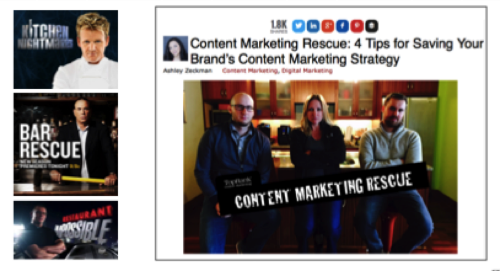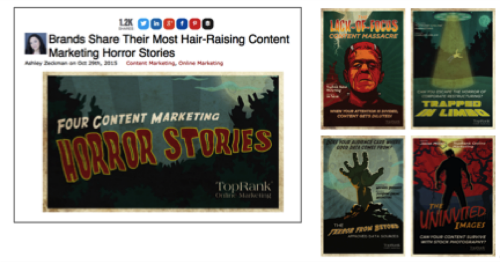
Stories like Indiana Jones, The Goonies and Sherlock Holmes have all taught us a very important (and sometimes frustrating) life lesson: If you want to find the artifact/treasure/bad guy, you have to crack the code!
Even with all of the information available to us as marketers today, there is still so much mystery surrounding the “perfect” combination for content marketing success. Additionally, thousands of variables and quickly evolving customer habits add complexity to content planning and execution.
But I’ll let you in on a little secret. I can help you crack the code to building influence with content marketing! How? There are three essential steps to building influence with content and this post contains a “map” of each element. While the exact code might be slightly different from one company to the next, these steps can help you identify the key elements you need to deploy a successful and impactful content program.
Identify Audience Needs
The sheer number of options available today have enabled consumers to become much more selective about which brands they interact with online. There is another cause and effect to this influx of options: consumers are overwhelmed.
To truly capture and keep the attention of current or potential customers, brands must identify who their customers are, what they care about and who influences them. There is no one-size-fits-all solution to attract and engage different members of your audience. Preferences will vary on everything from content types to topics and goals.
Who Are Your Best Customers?
To better reach these different audience members, focus on identifying key traits of your current ideal customers. Once you’ve uncovered that information, you can develop customer profiles or personas which can serve as a guide for your content strategy.
3 Ways to Uncover What Customers Care About
Access to your customers will vary greatly based on your industry and offerings. Three simple ways to uncover customer needs include:
- Asking Customers Directly: surveys, social polls, customer calls
- Review Analytics: content types, key phrases
- Keyword Research: uncover top questions customers are asking online
Circle of Influence
The last piece to identifying audience needs is developing an understanding of who influences them. For example, if your target profile is a Director of Marketing, you will want to research the different types of people that influence their decisions. Below is an example of how this might look:

Including influencers in your content provides a great opportunity to maximize exposure and build credibility. The information that you uncover about who influences your audience can be used to determine which influencers will have the most impact on your audience.
Develop Content Based on Identified Needs
Once you’ve developed customer profiles, you can begin planning the details of your content creation. For each profile, it’s important to create content that meets the needs of every stage in the buying cycle. By following an attract, engage, convert model, you can ensure that you have content for that customer at every stage.
When building a model to optimize across the sales cycle be sure to include:
- The channel that the content will publish on.
- What keywords/phrases will be incorporated into the content.
- Which devices the content should be optimized for.
- Content topics that map to the different stages.
Test Different Content Types
Different segments of your audience will have specific preferences on the types of content that they want to engage with. Even with little resources and budget, it’s important to test different content types to appeal to your audience.
TopRank Marketing has published a list of 30 different content marketing tactics that includes definitions, pros/cons as well as some great examples from other brands to get you started.
Create A Content Brief
Every larger piece of content (eBooks, white papers, research reports) should include a project brief. A detailed brief will serve as a guide for the project and help ensure that your team stays aligned with the objective of the content.
Your brief should include things like:
- Identifying who the content is for.
- Detailing the problem that this content solves for the reader.
- A clear directive of what the reader should do next.
- Goals and details of how success will be measured.
Maximize Content Impact
At the end of the day, we need to be intensely focused on developing, publishing and promoting content that has a maximum impact on our audience and on our marketing goals. The difference between good and great content can be summarized by a few different characteristics.
Incorporate Storytelling Into Content
Stories help create a connection between the content and the reader. While it may take some extra effort, adding a storytelling element to your content has many benefits including:
- Creating a shared experience.
- Helping readers develop an emotional connection to the message.
- Differentiating you from your competitors.
- Assigning meaning to the content.
Additionally, a great story is very sharable which can help increase the exposure of your content. Sometimes the simple addition of a widely recognized metaphor can be just the extra boost that your content needs to make it more interesting and enticing for your audience.

Content Should Be Visual
Compelling visuals alongside great storytelling makes for a killer content combination! Because of the amount of information available, consumers eyes can quickly begin to glaze over when they’re faced with a wall of endless content.
Be sure to include creative visuals that compliment different types of content. Below is an example of a blog post that included “horror stories” from top content experts. Based on the experiences that they shared, our team was able to develop a series of horror movie “posters” to compliment the content.

Content Amplification
Every piece of content should have an amplification plan to maximize impact. Some best practices for content amplification include:
- Develop compelling visuals to encourage social share.
- Create unique messaging for each social platform.
- Encourage employees to amplify your content.
- If you worked with influencers, develop messages for them to share.
Take These Steps to Build Influence with Content
Truly cracking the code takes time, testing and iterations of your approach. However, you can use the three steps above to build a solid foundation that will speak to the needs of your audience, solve their pain points and maximize content efforts.
If you’re interested in learning more about how TopRank Marketing can help you build influence with your audience through content marketing, contact us today for a consultation!


